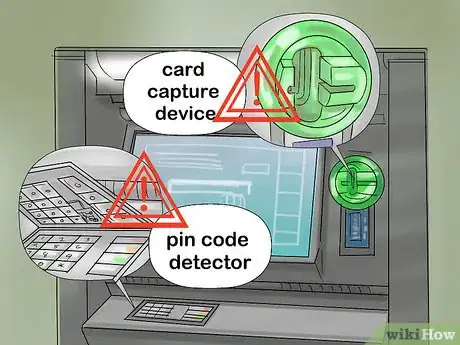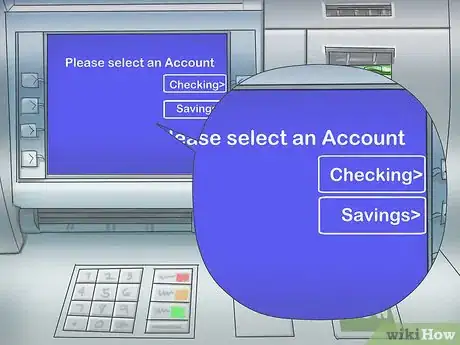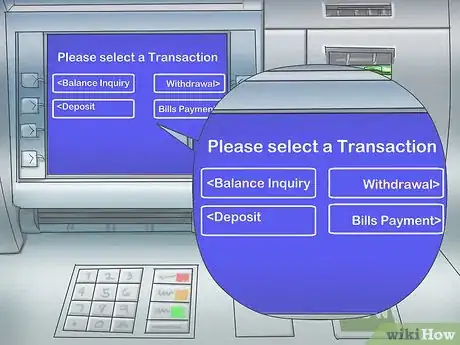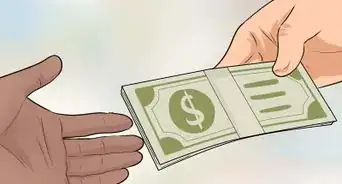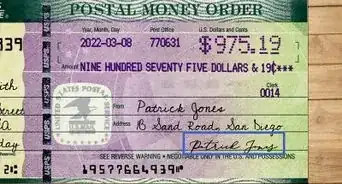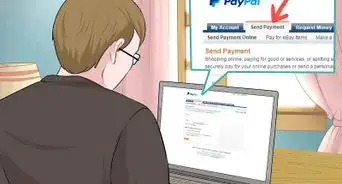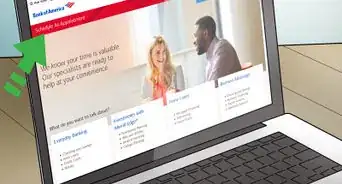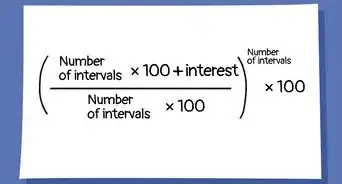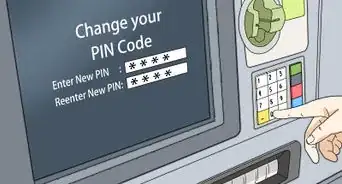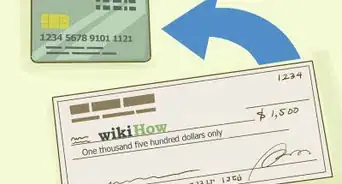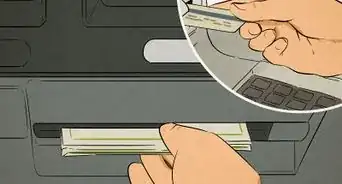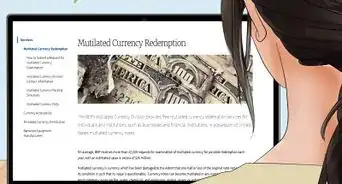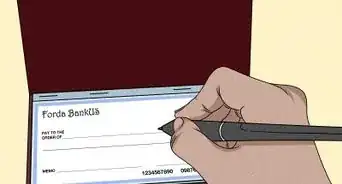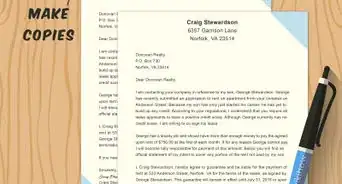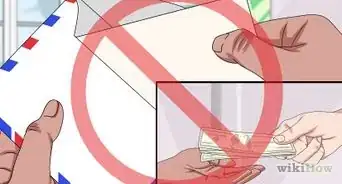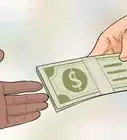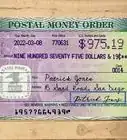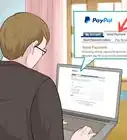This article was co-authored by wikiHow Staff. Our trained team of editors and researchers validate articles for accuracy and comprehensiveness. wikiHow's Content Management Team carefully monitors the work from our editorial staff to ensure that each article is backed by trusted research and meets our high quality standards.
This article has been viewed 80,953 times.
Learn more...
ATMs, or Automated Teller Machines, offer people a convenient way to manage banking transactions 24-hours a day. The most basic of machines allow users to withdrawal or remove funds from their account, while others have more advanced features including depositing funds, transferring funds between accounts, checking balance statements and facilitating credit card payments.[1] However, with the prevalence of these machines comes an increase in crimes related to ATM usage. Knowing how to safely use an ATM is key in ensuring your safety during each banking transaction.
Steps
Keeping Yourself Safe
-
1Chose ATMs that are well-monitored and well-lit. Visit an ATM that is in a well-lighted area, or one that is monitored by surveillance cameras or security personnel. This is true of both indoor ATMs and drive-up ATMs. If possible, try to use during daylight hours.
- Drive up ATMs are often safer than walk-up ATMs because of the privacy and safety of your vehicle and locked doors.
-
2Be aware of your surroundings. Before using your card, be vigilant and look around for anyone who may arouse your suspicion. If you feel the least bit apprehensive, avoid using that particular ATM and search for a safer option.
- If using a drive-up ATM, keep your engine running, keep your car doors locked, and keep all windows rolled up (except the one you are using).
- At a walk-up ATM, always lock your car doors and take your keys with you. Never leave the car running.
- Some ATMs require that you use your card to open the door to gain access to the ATM. Avoid letting anyone follow in behind you, and make sure the door is completely closed behind you when in the vestibule.
Advertisement -
3Minimize your time at the ATM. Prepare all transactions before going to the ATM. Have your card ready so you won’t have to fumble around with your purse or your wallet. Also, if you’re making a deposit, have all checks endorsed and have the envelope sealed if you’re using one.
-
4Protect your PIN. Never share your PIN information with bank personnel, strangers, or anyone not associated with the account. When typing in your PIN, use your free hand to cover the keyboard. Some ATMs come equipped with screening devices but you can never be too safe.
-
5Store your money quickly and securely. When withdrawing money from an ATM, be sure to place your card, money, and receipt in a secure place such as your wallet or purse before leaving the ATM. Discreetly count your cash to ensure you have the correct amount and store it quickly.
Avoiding Scams
-
1Choose bank ATMs over non-bank locations. ATMs at banks usually have better surveillance and so avoid tampering by criminals. It is easier for criminals to rig non-bank ATMs at locations like the grocery store, shopping mall, or convenience store.
-
2Don’t re-enter your PIN if the ATM swallows your card. Criminals can insert a blocking device into the card slot which causes your card to jam. Once you re-enter your PIN, the criminals will have access to both your lodged ATM card, and you PIN. When you leave, the criminals will then remove the blocking device and make withdrawals from your account.
- Criminals will also pose as “good Samaritans” who suggest you re-enter your PIN, or will offer to hold down the cancel button while you enter your PIN. In reality, they’re attempting to memorize your PIN number.
-
3Look for card skimmers. Card skimmers are devices that are added to the ATM to capture personal information including your account number, PIN, and account balance. They are usually mounted on the side of the machine or right on top of the card entry slot, and resemble normal card slots or scanners. Look for duplicate card scanners or suspicious labels that say “card cleaner” or “slide card here first.”
-
4Be aware of cash trapping scams. Criminals place a thin sleeve or other device that will trap your cash when it is dispensed from the cash dispenser. Your transaction will appear to be normal, but you will not receive your cash. Once you walk away (either to alert the bank or out of frustration), the thieves will remove the device and steal your money. If you have a friend nearby, send them for assistance. Otherwise, leave the scene and immediately contact your financial institution.
- Avoid using your cell phone while at the ATM. This may put you in a more dangerous situation.
Using an ATM
-
1Choose your ATM. You can use your debit or credit card at any ATM owned by your banking institution without charge. Your bank card may also be used at ATMs owned by other financial institutions, but there are often fees associated with these transactions. Not only will the ATM operator charge a fee, but your bank may also. Try to choose an ATM that is operated by your financial institution to avoid fees.
- Charges by the ATM operator can range anywhere from $1.50 to $10 per transaction in certain locations.[2]
- Charges from your bank can range from $1.50 to $3.50 per transaction.
-
2Insert your card. The insertion slot is usually labeled and surrounded by lights. Look for pictures on the ATM machine that demonstrate the proper way to insert your card. If inserted incorrectly, the machine may not read your card.[3]
- Some machines require you to insert and extract the card in order for it to be read by the machine. Others will pull the card into the ATM and will not return it until your transaction is complete.
-
3Select your language. The machine will prompt you to select a language depending on the country in which the machine is located. Press the button that corresponds to your desired language. The machine will sometimes save your preference for future use so you don’t have to repeat this step again.[4]
-
4Enter your PIN or Personal Identification Number. An ATM pin is a 4-digit code that is used to confirm a user’s identity and allow access to banking transactions. This has to be set up prior to using your bank card at an ATM. If you know your 4-digit PIN, use the numeric keypad to enter it, and then press “enter”.[5]
- Simply press the “clear” button if you make a mistake while entering your PIN.
- Always make sure to cover your PIN entry so others can’t gain access to your account.
- Make sure you are entering the correct PIN number for your card. There’s a chance that you may be locked out of your account if you enter the incorrect PIN number too many times.
-
5Choose your account type. The ATM will prompt you to choose the bank account from which you want to make all transactions. Select the desired account. For example, if you have both a checking and savings account at your financial institution, you’ll have to select your desired account.[6]
-
6Select a transaction type. The type of transactions vary from machine to machine, but the most used transactions are withdrawals, deposits, and balance inquiries.[7]
- A withdrawal is when a customer chooses a set amount of money to have pulled from their account of choice, and dispensed directly from the ATM.
- A deposit is when the ATM accepts cash and/or checks to add as a credit to the customer’s account of choice.
- Balance inquires allow the user to view the current available balance of funds in their account of choice.
-
7Enter the amount needed for withdrawal or deposit. Use the keypad to enter the numerical value of the funds that are being withdrawn or deposited to the ATM and press “enter”. If you are withdrawing, make sure your requested amount doesn’t exceed your available balance.[8]
- Most ATMs will only allow you to enter funds in increments of 10s and 20s. Except for when transferring funds between accounts or making bill payments, generally avoid trying amounts that involves coinage or are less than $20.
- When making deposits, some ATMs require envelopes. Be sure to read the on-screen directions to ensure you are properly inserting cash and checks.
-
8Retrieve your money, receipt, and card. If withdrawing cash, your cash will be dispensed once your transaction is finalized. Discreetly count your money to ensure you received the correct amount. The ATM will ask you if you require any other transactions. Press “no” (unless an additional transaction is required). When prompted for a receipt, press “yes”. Retrieve your receipt and bank card to finalize your transaction.[9]
- Don’t forget to retrieve your bank card! This is the most important step in maintaining the safety of your account.
- Never leave your receipt at an ATM. Always take it with you to guard against the unauthorized use of your card.
Community Q&A
-
QuestionIf I have lost my ATM card, can I get a new card from the bank, and how?
 Community AnswerYes. It would be best to either call your bank's customer service number or go into a location and tell them you lost your card. They will probably need your account number to help you with this.
Community AnswerYes. It would be best to either call your bank's customer service number or go into a location and tell them you lost your card. They will probably need your account number to help you with this.
Warnings
- Change your PIN number periodically.⧼thumbs_response⧽
- Keep your PIN confidential. Never share it with family, friends, banking professionals, nor over the phone.⧼thumbs_response⧽
- If you feel your card or account has been compromised, report it to your bank immediately to have your card cancelled and replaced.⧼thumbs_response⧽
Things You'll Need
- A friend, if going to an ATM at night
- An ATM or Debit card
- An ATM
- A remembered PIN
- A safe place to keep your ATM or Debit card
References
- ↑ http://www.investopedia.com/terms/a/atm.asp
- ↑ http://www.valuepenguin.com/banking/bank-atm-fees
- ↑ http://www.uandblog.com/How-to-withdraw-money-from-ATM-machine-7steps
- ↑ http://www.uandblog.com/How-to-withdraw-money-from-ATM-machine-7steps
- ↑ http://www.uandblog.com/How-to-withdraw-money-from-ATM-machine-7steps
- ↑ http://www.uandblog.com/How-to-withdraw-money-from-ATM-machine-7steps
- ↑ http://www.math-cs.gordon.edu/courses/cs211/ATMExample/UseCases.html
- ↑ http://www.uandblog.com/How-to-withdraw-money-from-ATM-machine-7steps
- ↑ http://www.uandblog.com/How-to-withdraw-money-from-ATM-machine-7steps







